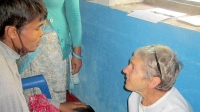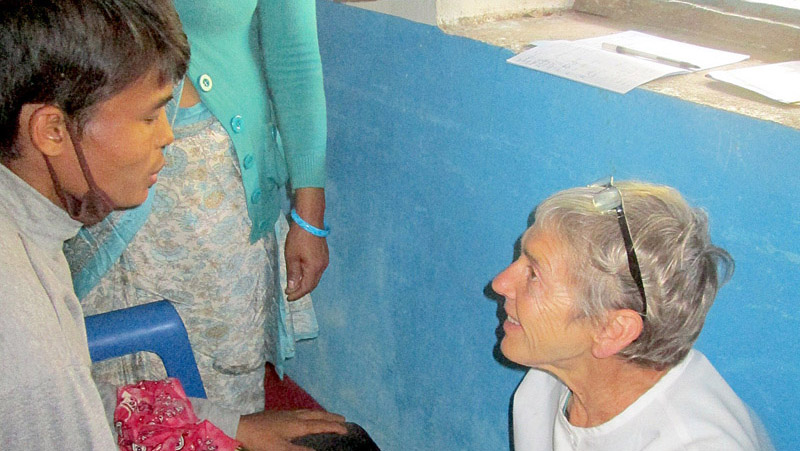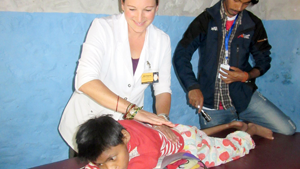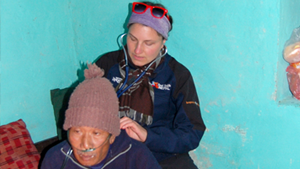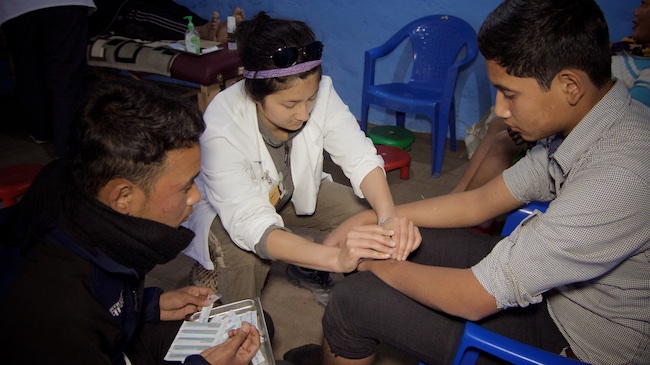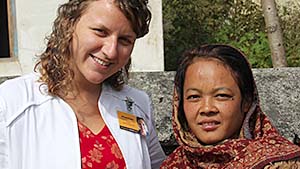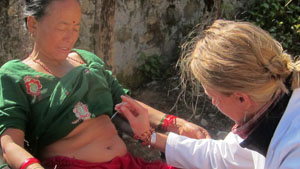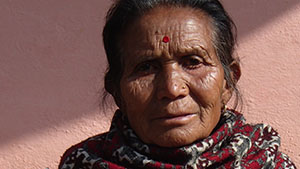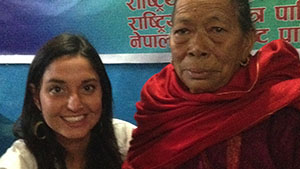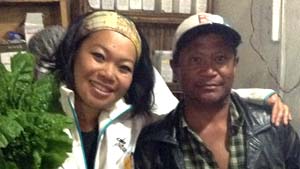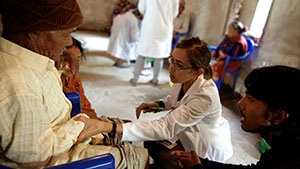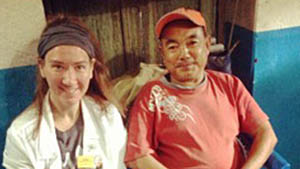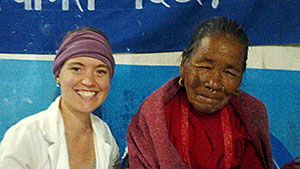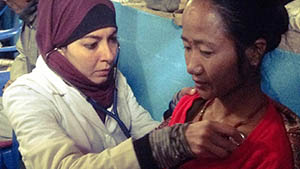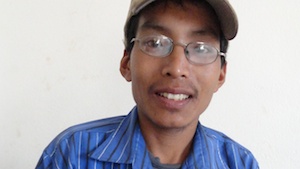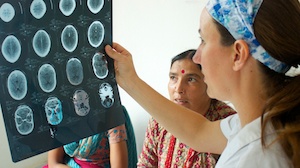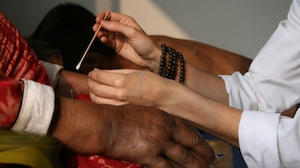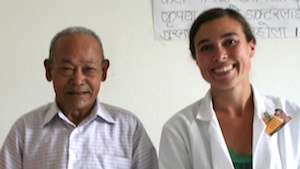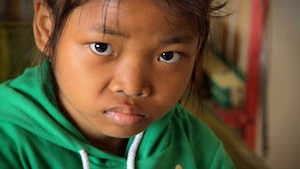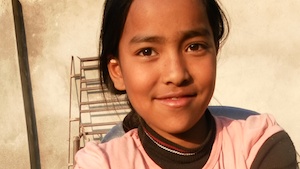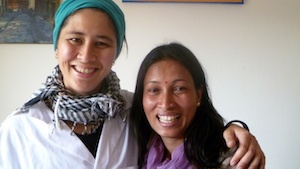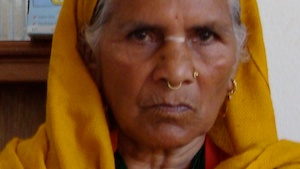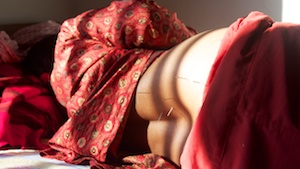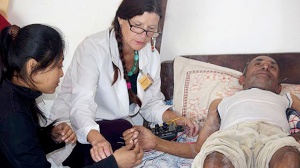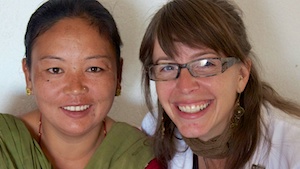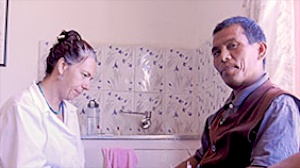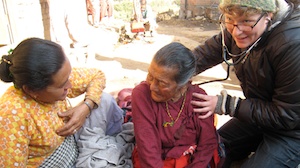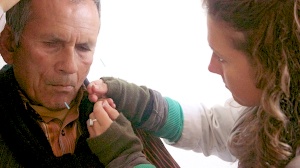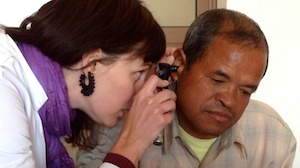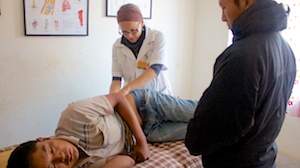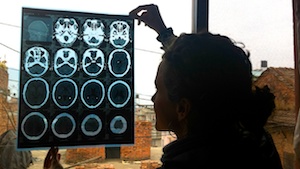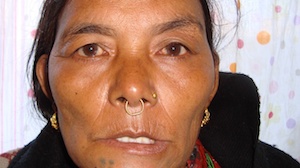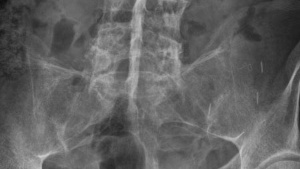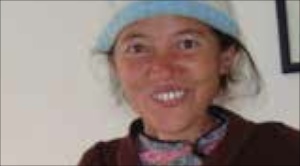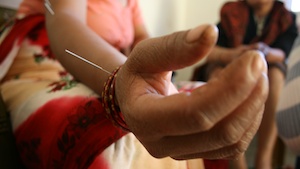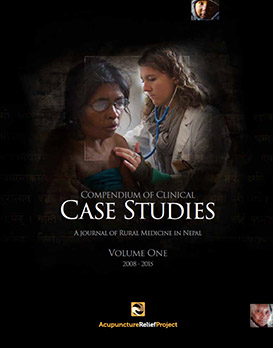Brad Caroll LMT
December 2011
Overview
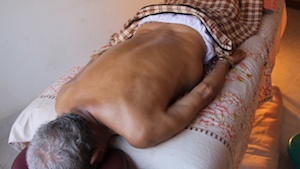 70-year-old male referred for massage treatments for pain associated with spondylosis of the spine and neuropathy. The patient is simultaneously receiving ongoing acupuncture treatments. At the time of the referral, he had completed 18 acupuncture treatments. The main objective, through the combination of massage and acupuncture, is to manage pain, increasing the patient’s quality of life.
70-year-old male referred for massage treatments for pain associated with spondylosis of the spine and neuropathy. The patient is simultaneously receiving ongoing acupuncture treatments. At the time of the referral, he had completed 18 acupuncture treatments. The main objective, through the combination of massage and acupuncture, is to manage pain, increasing the patient’s quality of life.
SUBJECTIVE
Patient’s chief complaint is of severe pain in the low back and right shoulder. The patient defines severe pain as discomfort that inhibits or prohibits his daily activities, such as walking without help from others. He experiences “tingling” sensations in both hands that radiate posteriorly down both legs to the feet, originating at the lumbar region of the back. The frequency of the overall pain is constant and increases with activity (walking and getting up from bed), but the radiating sensation is intermittent and unpredictable. The onset of the radiating sensation may correlate to the severe levels of pain in the lumbar region of the spine. The intensity of the pain fluctuates daily between severe and mild depending on the amount of activity in which he engages and the treatments he receives. He defines mild pain as a discomfort he recognizes on a daily basis, but doesn’t interfere with or prohibit his daily activities. Direct sun exposure alleviates the pain. He reports that the pain interferes with sleep when at a moderate level. The patient defines moderate pain as a discomfort that is constant, distracting and interferes with his daily activities (ie. walking), but doesn’t require help from others. The onset of the pain is unknown, but increased after being hit by a car 1 year ago. Pain increases with cold temperatures and with coughing episodes. Patient states that surgery has been recommended, but he is unable to afford it. He expresses his fear of becoming paralyzed from spinal surgery. He experiences depression and at times wishes he were dead because he feels like he can no longer provide for his wife and be useful to his family. He feels stressed and emotional most of the time, especially when his pain levels increase and his ability to be useful to his family decreases. Although he has never received a professional massage treatment before, he uses self-massage with Tiger Balm daily for temporary relief of shoulder and low back pain.
Objective
Visual observations while at the clinic, indicating pain and stress, include the following:
Walking slowly with assistance from his wife and a walking stick
Facial expressions associated with pain when walking; Attempting to sit or stand by himself or removing clothing in preparation for a treatment
Tone and speed of voice increases with movements that cause pain
Tears when answering questions about his pain and his perception of how his condition affects his wife and family
Muscle spasms on the bilateral wrist flexors, including flexor carpi radialis, flexor carpi ulnaris, palmaris longus, flexor digitorum superficialis and flexor digitorum profundus as well as triceps brachii when lying in the prone position on the table
Postural analysis findings:
Bilateral medial rotation of the shoulders; Mild
Right shoulder elevated; Mild
Posterior tilt of the pelvis; Mild
Genu Varum; Mod
Palpation:
Hypertonicity of the erector spinae group, gluteal region and hamstrings
Palpatory tenderness on the right supraspinatus, infraspinatus, rhomboid major, minor, biceps tendon, teres minor and major and the anterior, middle and posterior fibers of the deltoid
Palpatory tenderness with increased pain on origins of bilateral quadratus lumborum, gluteus maximus, gluteus medius and gluteus minimus
AROM:
Lateral flexion, rotation, flexion and extension of the head and neck ( cervical spine) are all within normal limits with minimal discomfort.
Extension and flexion of the cervical, thoracic and lumbar spine are within normal limits. Moderate pain occurs with flexion of the spine beginning with contraction of the action.
Rotation and lateral flexion of the spine are all within normal limits with no pain indicated.
Abduction, adduction, flexion and extension of the arms are below normal limits with pain increasing with extension and abduction.
Increased pain at the biceps tendon on right shoulder with flexion of the right elbow.
Plan
Continue Traditional Chinese Medicine treatments 2-3 times per week as recommended by acupuncturist. Massage treatments ( approx. 30-40 min. each) at least 2 times per week for 5 weeks to increase relaxation, stress reduction, and decrease overall tension and pressure of the muscles of the posterior spine, shoulders, pelvis and legs. These muscles include, bilaterally, the erector spinae group, supraspinatus, infraspinatus, rhomboid major, rhomboid minor, biceps tendon, biceps brachii, teres minor, teres major, deltoid, quadratus lumborum, gluteus maximus, gluteus medius, gluteus minumis, piriformis, biceps femoris, semitendinosus, semimembranosus, gastrocnemius, peroneus longus and peroneus brevis. Massage treatments include the following techniques and purposes for the muscle groups affiliated, bilaterally, with the posterior spine, posterior shoulders, posterior pelvis, posterior thigh and lower leg:
Effleurage: To relax the muscles, stimulate the peripheral nerves, increase lymph and blood flow, remove waste products and begin to stretch the muscle tissues
Pettrisage: To increase mobility between tissues, stretch the muscle fibers, increase venous and lymphatic return, relax the muscles and aid in waste product removal
Compression:
Hypertonic muscles soften and lengthen.
Muscles are flushed and interstitial stasis is reduced.
Released histamines dilate capillaries, increasing cellular nutrition.
Muscles fire faster with increased amounts of acetylcholine.
Muscle lesions heal faster with increased collagen production.
Stretching muscle fibers increases capillerization.
Fascia is rejuvenated and enlivened.
Range-of-motion and freedom of movement increase.
Myofascial pain and secondary autonomic phenomena caused by trigger points are usually eliminated.
Hot/warm hydro therapy: Use of the warm singing bowl technique, warm compress with vapor wrap and prossage soft tissue lotion
Heat therapy dilates the blood vessels of the muscles surrounding the lumbar spine. This process increases the flow of oxygen and nutrients to the muscles, helping to heal the damaged tissue.
Heat stimulates the sensory receptors in the skin, which means that by applying heat to the lower back, pain signals transmitted to the brain will decrease, partially relieving discomfort.
Heat application facilitates stretching the soft tissues around the spine, including muscles, connective tissue and adhesions. Consequently, with heat therapy, there will be a decrease in stiffness while improving flexibility and creating an overall feeling of increased comfort.
Vibration: Used to help sedate the patient’s nervous system and aid in general, overall relaxation. Singing bowl vibration on the quadratus lumborum and plantar surfaces of the feet and sacrum
Homework for patient:
Stretches for flexion of the spine twice daily, morning and bedtime
Hot water bag each night before sleep
Continue to use Tiger Balm oil and self-massage, as needed, for pain relief.
Increase water intake by 1 liter.
Rest as much as possible
Outcome:
After a total of 10 massage treatments, the patient reported a 15% decrease in overall pain. Patient stated that he consistently experienced a 50-75% reduction of pain symptoms during the first 48 hours after a massage treatment before symptoms gradually returned. Pain increased to severe levels with activity upon the onset of its return after the initial 48 hours. The patient appeared more relaxed when receiving treatment and when in the treatment room. His range-of-motion was the same, but with less pain. He was able to walk by himself without his wife’s help. He could sit, stand, remove his clothing and upright himself from a prone position on the massage table without assistance. Tenderness and pain with palpation and touch decreased. He presented with less physiological mannerisms associated with pain. He smiled for the first time during treatment 9. Muscle spasms occurring during the treatments decreased moderately. Hypertonicty of the erector spinae group decreased minimally.
Conclusion
This patient completed a total of 40 acupuncture and massage therapy treatments over a 3 month period. During this time, he received pain relief, even if only for brief periods after the treatments. Consistently, within 48 hours of each treatment, the patient’s pain would return to severe levels, interfering with his daily activities, thereby decreasing his quality of life. Based on the patients age, severity of the physical condition, emotional health and socio-economic status, it is my opinion that the short-term focus of care should consist of encouragement for improved emotional health to promote a better quality of life. Long-term care for pain with acupuncture and massage is appropriate to provide pain relief, provide hope and contribute to his overall quality of life. With continued treatment, I believe that the patient would benefit from care focused on education of his condition, including the objective and subjective observations, providing pain relief and recommending resources that can support a better quality of life.


